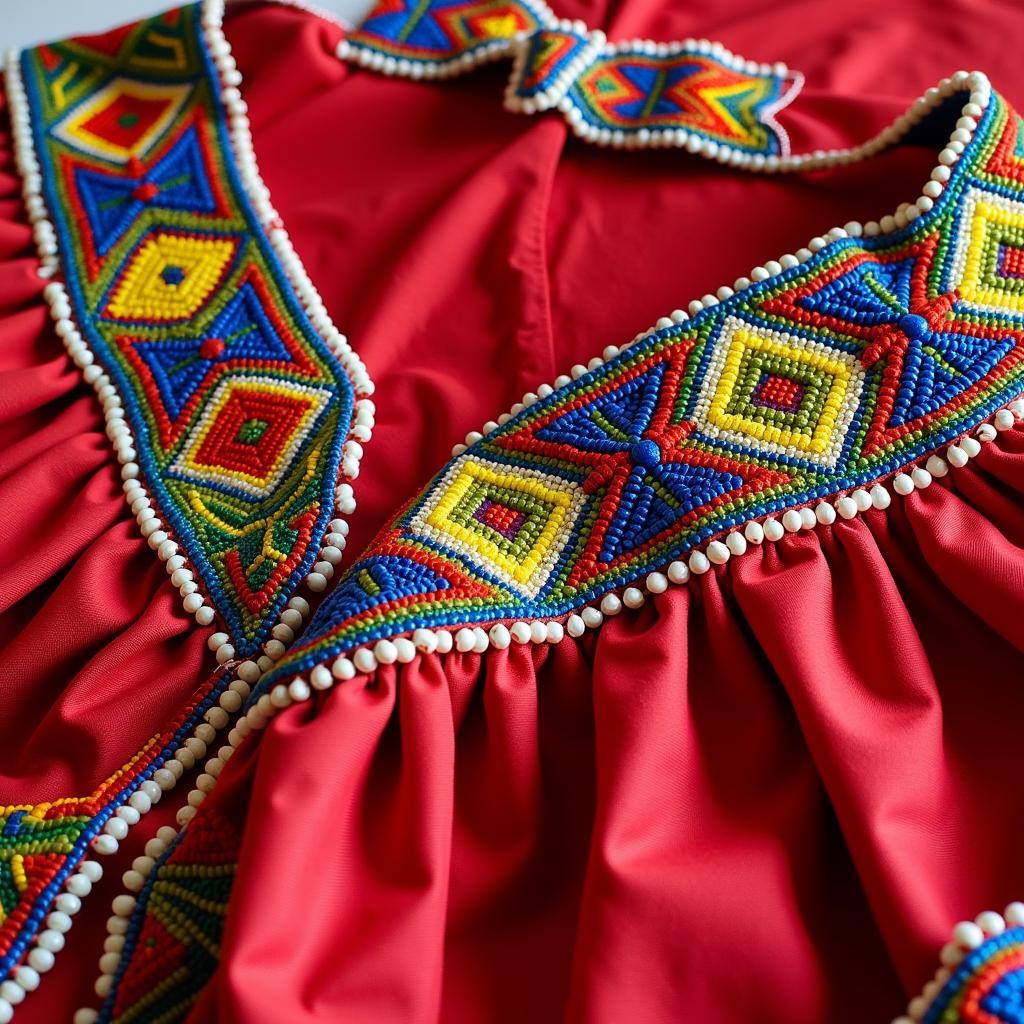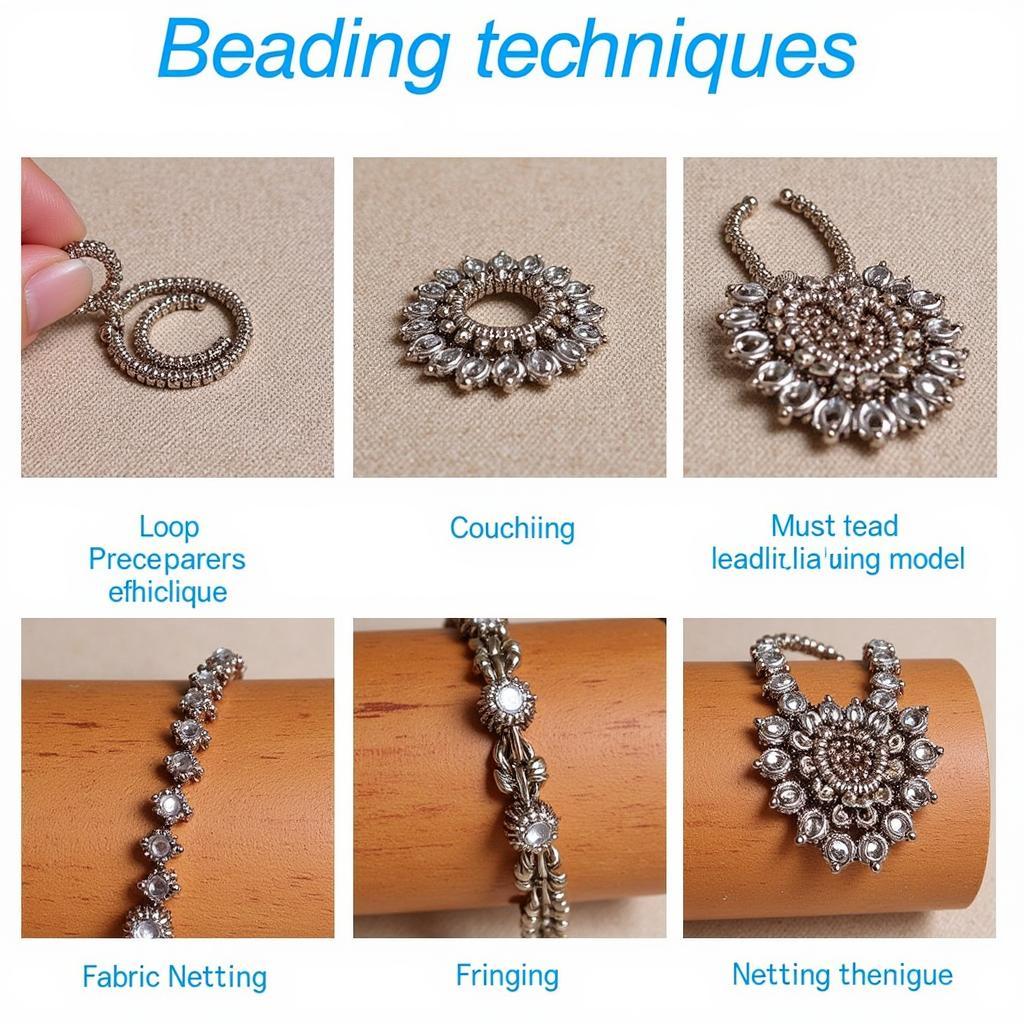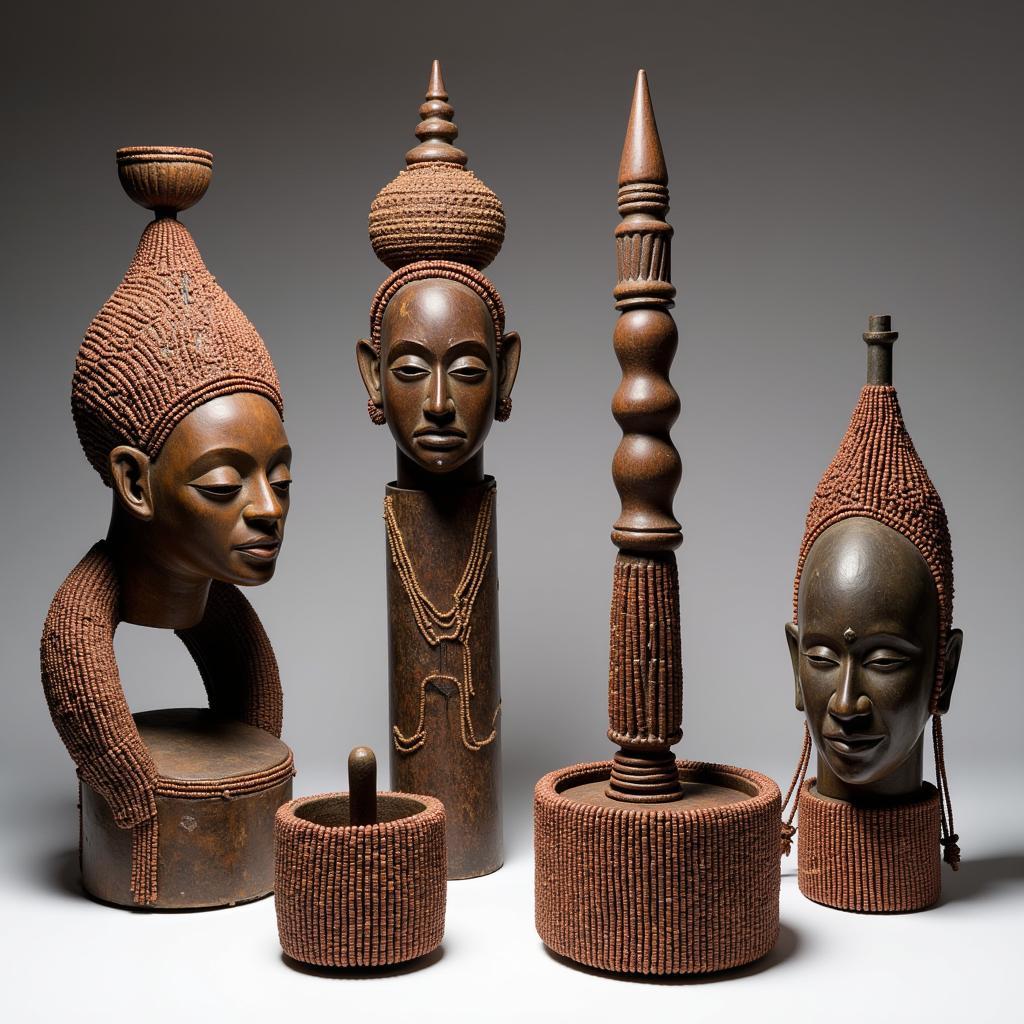Unveiling the Art of African Beaded Edging
African Beaded Edging, a vibrant testament to the continent’s rich artistic heritage, transforms ordinary objects into extraordinary works of art. From clothing and accessories to home decor and ceremonial items, the intricate application of beads elevates functionality into powerful expressions of cultural identity, personal style, and skilled craftsmanship. Let’s delve into the fascinating world of African beaded edging and discover the stories woven within each meticulously placed bead.
A Colorful History of African Beaded Edging
Beads have held significance in Africa for centuries, serving not only as adornment but also as symbols of status, wealth, and spiritual beliefs. The earliest evidence of beadwork dates back thousands of years, showcasing the enduring allure of this art form. African beaded edging, in particular, demonstrates a masterful understanding of color, pattern, and texture. Each region and ethnic group has developed its unique style, utilizing distinct beading techniques, color palettes, and patterns that tell a story of their heritage and traditions. These intricate designs are often passed down through generations, preserving cultural knowledge and artistic skills.
Over time, African beaded edging has evolved, incorporating new materials and influences while retaining its core cultural significance. Today, we see a resurgence of interest in this ancient craft, as contemporary artists and designers draw inspiration from traditional techniques to create innovative and captivating pieces.
 Traditional Clothing with African Beaded Edging
Traditional Clothing with African Beaded Edging
Exploring Different Styles of African Beaded Edging
From the intricate geometric patterns of the Ndebele people to the bold, colorful designs of the Maasai, African beaded edging encompasses a diverse range of styles. Each style reflects the unique cultural identity and artistic traditions of its creators. Some popular techniques include:
- Looping: Creating small loops of beads to form a continuous edging.
- Couching: Stitching rows of beads directly onto the fabric.
- Fringing: Attaching strands of beads to create a dangling fringe effect.
- Netting: Weaving beads together to create a mesh-like edging.
These techniques, often combined and elaborated upon, result in breathtaking designs that add a touch of elegance and cultural significance to various items. Learning about these diverse styles allows us to appreciate the artistry and craftsmanship involved in creating African beaded edging.
 Comparing Different African Beaded Edging Techniques
Comparing Different African Beaded Edging Techniques
How is African Beaded Edging Used?
African beaded edging isn’t merely decorative; it’s a versatile element incorporated into various aspects of life. It adorns:
- Clothing: Adding intricate details to collars, cuffs, hems, and necklines of dresses, shirts, and skirts. See more about African dresses for sale.
- Accessories: Embellishing bags, belts, necklaces, and bracelets.
- Home Decor: Enhancing curtains, wall hangings, and furniture.
- Ceremonial Objects: Adding a touch of sacredness to ritual items and regalia.
- Headwear: Creating elaborate designs on traditional headwear. Explore more on African headwear styles.
The use of African beaded edging extends beyond mere aesthetics. It often symbolizes social status, spiritual beliefs, and cultural heritage.
The Cultural Significance of African Beaded Edging
Beads in African culture often hold symbolic meaning, representing everything from ancestry and social status to spirituality and marital status. The colors used in African beaded edging can also convey specific messages, with each hue carrying its own significance. For a deeper understanding of the cultural context, exploring African culture FAQs is recommended. Understanding this symbolism offers a deeper appreciation for the artistry and cultural depth embedded within each piece.
 African Beaded Edging on Ceremonial Objects
African Beaded Edging on Ceremonial Objects
Where to Find Authentic African Beaded Edging
Today, you can find authentic African beaded edging in various places:
- Fair Trade Markets: Supporting artisans directly by purchasing their handcrafted pieces.
- Online Retailers: Offering a wide selection of beaded items from different regions of Africa.
- Cultural Centers and Museums: Showcasing traditional and contemporary beaded art.
Acquiring authentic pieces helps preserve this ancient craft and supports the talented artisans who continue to create these beautiful works of art. For those fascinated by body adornment, exploring African body art can provide additional insights. And for a deeper understanding of the spiritual connection to adornment, reading about African hair spirituality can be enlightening.
Conclusion
African beaded edging is more than just a decorative element; it’s a vibrant expression of African culture, history, and artistic ingenuity. From its rich history and diverse styles to its cultural significance and contemporary applications, African beaded edging continues to captivate and inspire. So, the next time you encounter a piece adorned with African beaded edging, take a moment to appreciate the artistry, the cultural heritage, and the stories woven within each meticulously placed bead.
FAQ
- What materials are used in African beaded edging? Traditionally, materials like bone, shells, and seeds were used. Today, glass beads are most common.
- How long does it take to create African beaded edging? The time varies depending on the complexity of the design and the skill of the artisan.
- Can I learn to create African beaded edging myself? Yes! Many resources, including online tutorials and workshops, are available.
- How can I tell if a piece of African beaded edging is authentic? Look for handcrafted details and inquire about the origin and artisan.
- How should I care for African beaded edging? Gentle handwashing or spot cleaning is recommended for most beaded items.
- Where can I buy authentic African beaded products? Look for reputable online retailers, fair trade markets, or cultural centers specializing in African art.
- What is the significance of different colors in African beadwork? Colors often hold symbolic meaning related to spirituality, social status, or natural elements.
Common Scenarios and Questions
- Scenario: You want to incorporate African beaded edging into your home decor.
- Question: What type of beaded edging would complement my existing style?
- Scenario: You’re looking for a unique gift with cultural significance.
- Question: Where can I find authentic handcrafted African beaded jewelry?
- Scenario: You’re interested in learning more about African beadwork traditions.
- Question: Are there any museums or cultural centers that showcase African beadwork?
Further Exploration
You might also be interested in learning about other African textile traditions or exploring contemporary African fashion designers who incorporate beadwork into their creations.
Contact Us
For further assistance, please contact us at Phone: +255768904061, Email: kaka.mag@gmail.com, or visit us at Mbarali DC Mawindi, Kangaga, Tanzania. Our customer service team is available 24/7.
